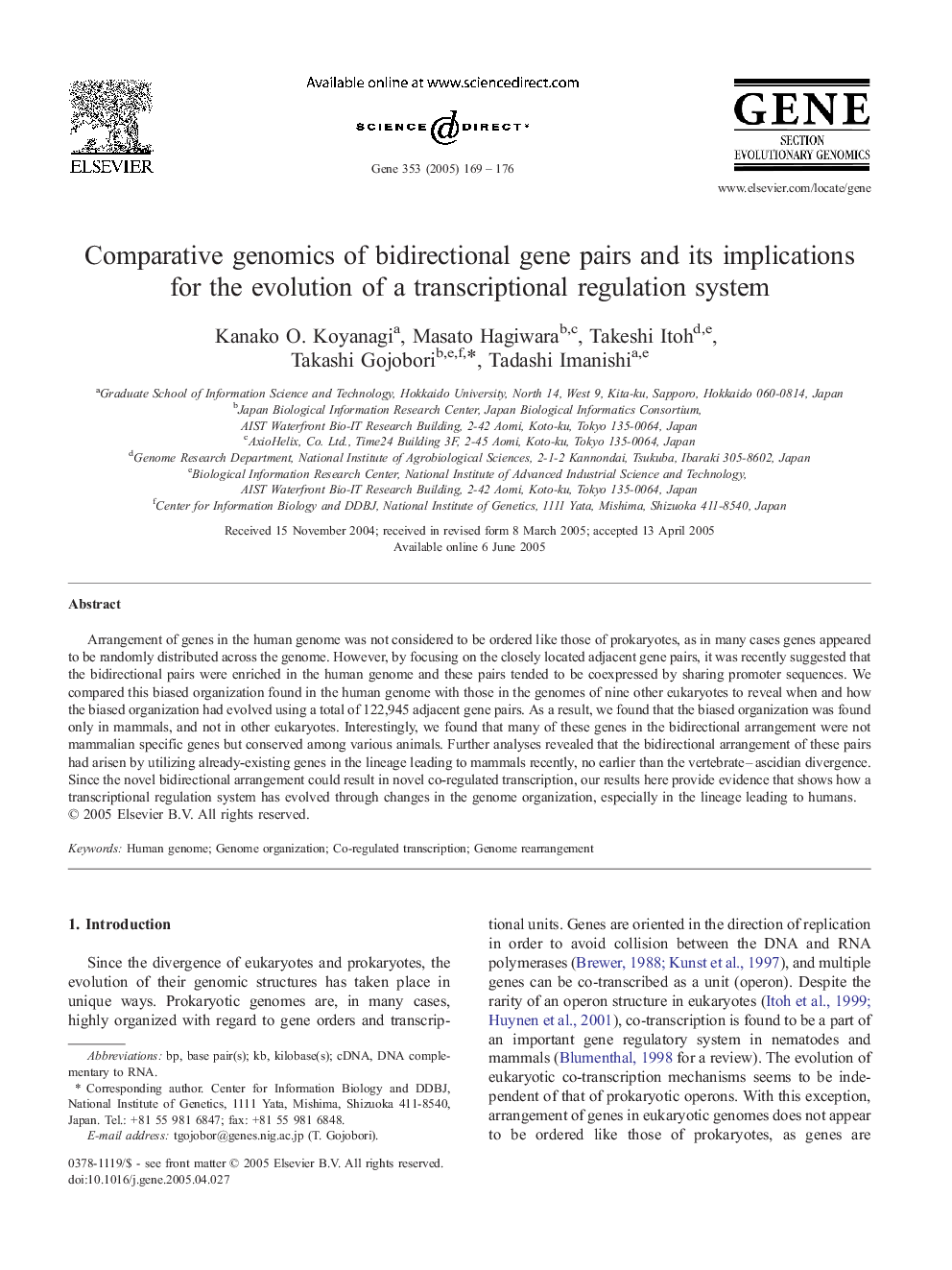| Article ID | Journal | Published Year | Pages | File Type |
|---|---|---|---|---|
| 9127022 | Gene | 2005 | 8 Pages |
Abstract
Arrangement of genes in the human genome was not considered to be ordered like those of prokaryotes, as in many cases genes appeared to be randomly distributed across the genome. However, by focusing on the closely located adjacent gene pairs, it was recently suggested that the bidirectional pairs were enriched in the human genome and these pairs tended to be coexpressed by sharing promoter sequences. We compared this biased organization found in the human genome with those in the genomes of nine other eukaryotes to reveal when and how the biased organization had evolved using a total of 122,945 adjacent gene pairs. As a result, we found that the biased organization was found only in mammals, and not in other eukaryotes. Interestingly, we found that many of these genes in the bidirectional arrangement were not mammalian specific genes but conserved among various animals. Further analyses revealed that the bidirectional arrangement of these pairs had arisen by utilizing already-existing genes in the lineage leading to mammals recently, no earlier than the vertebrate-ascidian divergence. Since the novel bidirectional arrangement could result in novel co-regulated transcription, our results here provide evidence that shows how a transcriptional regulation system has evolved through changes in the genome organization, especially in the lineage leading to humans.
Keywords
Related Topics
Life Sciences
Biochemistry, Genetics and Molecular Biology
Genetics
Authors
Kanako O. Koyanagi, Masato Hagiwara, Takeshi Itoh, Takashi Gojobori, Tadashi Imanishi,
